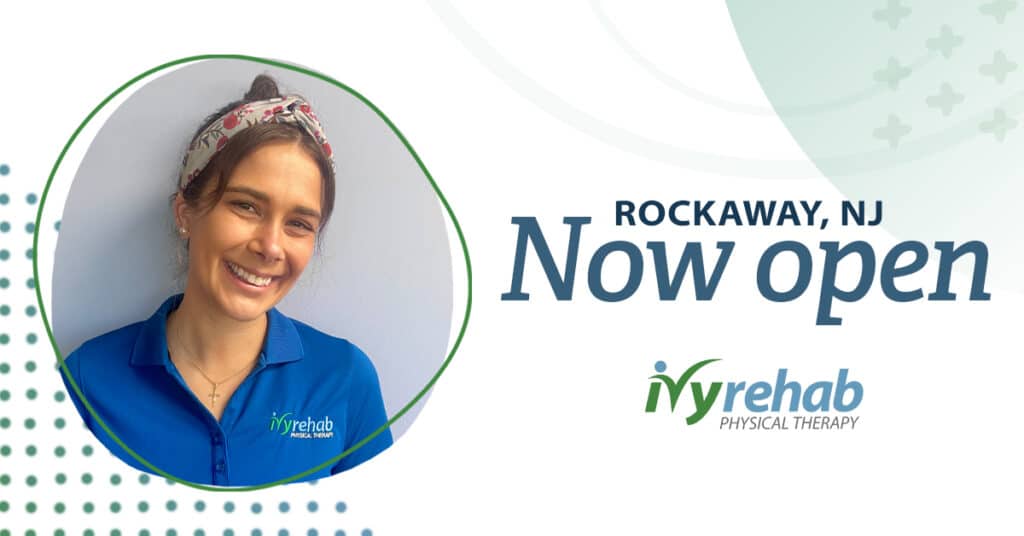With early diagnosis and treatment advances, patients with cancer are surviving longer—to the extent that cancer is now classified as a chronic disease.
But this isn’t to say it’s become an easier experience. A cancer diagnosis can have a ripple effect on every aspect of your life, including your physical, mental, and emotional well-being. Still, the longer lifespan of cancer survivors means that more attention has been shifted to improving quality of life and how to adapt and thrive following cancer treatment.
Now, rather than simply treating the disease, oncology teams address the totality of side effects and impact on the whole person by incorporating cancer rehabilitation throughout the treatment process.
What Is Cancer Rehabilitation?
What is cancer rehabilitation for a given patient and diagnosis?
Patients with cancer often have a mix of impairments—and for some, treatment side effects are as challenging as surviving the disease itself. So, in general, cancer rehabilitation (or oncology rehabilitation) refers to a medically supervised program of recovery from the effects and treatment of oncological diseases.
The most common adverse effects of cancer treatment are cancer-related fatigue, weakness, lymphedema, cardiotoxicity, peripheral neuropathy, balance deficits, weakness, incontinence, radiation fibrosis, and pain.
The immediate goal is to minimize the long-term and severe effects of cancer and cancer treatment, such as radiation therapy. Longer-term, the end goal of cancer rehabilitation is to improve quality of life and provide complete recovery of physical and other functions.1
Individual Cancer Rehabilitation Treatment Plans
The nature and components of a specific rehabilitation treatment program will depend on:
- The type, location, and stage of cancer
- The phase and type of treatment
- A patient’s age, other health markers and conditions, and unique needs
Research has found that long-term quality of life is improved for patients who actively participate in vocational, recreational, and home-based rehabilitation activities.2
Cancer Rehabilitation Treatment Stages
You can categorize cancer rehabilitation by stages based on the phase of diagnosis and treatment or disease progression:
- Prehabilitation – This preventative stage occurs post-diagnosis and pre-treatment. It aims to reduce the chance of developing impairments or loss of function.
- Restorative – During and following treatment, restorative rehab stabilizes and optimizes the patient’s functionality to return them to a pre-cancer state to the fullest extent possible.
- Supportive – Supportive rehab works to slow or reduce a decline in functionality in the face of progressive disease. Developing unique support services and exercises for your individual needs will greatly improve recovery. For example, vestibular rehabilitation can prove an effective treatment for those suffering from the vertigo that often accompanies radiation therapy.
- Palliative – Palliative rehab focuses on maintaining quality of life in the final stages of the disease.
Ultimately, rehabilitation at multiple stages of treatment isn’t an afterthought, but a core component to successful treatment programs.
Problems Cancer Rehabilitation Can Address
Cancer rehabilitation addresses a wide range of problems and challenges that patients may face throughout their journey. Understanding the different supportive care strategies can help reduce cancer patient uncertainty.
Physical
Cancers can be among the most brutal on the body—both directly and in terms of treatment side effects. Physical training may be difficult for some patients depending on the cancer treatment they are completing. However, understanding the connections between exercise and cancer and how movement aids in recovery is essential. Rehabilitation services can be used to address symptoms such as:
- Muscular weakness, paresis, or paralysis
- Pain
- Cancer-related fatigue (CRF)
- Lymphedema (fluid buildup resulting in swelling)
- Chemotherapy-induced peripheral neuropathy (CIPN) or numbness and tingling
- Damage to bones and soft tissue
- Cardiotoxicity from chemotherapy
- Radiation fibrosis
- Incontinence and pelvic pain
Functional
Cancer patients may encounter difficulty with basic tasks and functions. For this reason, help may be needed to deal with:
- Balance, flexibility, and range of motion
- Bowel or bladder dysfunction
- Getting dressed, bathing, and toileting
- Walking and climbing stairs
- Getting up off the floor or out of a chair
- Speech
- Difficulty swallowing or chewing food
- Sexual dysfunction
- Sleep disturbances
Cognitive
Treatment can affect cognitive functioning either in the short or long term. Under the umbrella term chemotherapy-induced cognitive impairment (CICI), or “chemo brain,” patients may encounter:
- Confusion and disorganized thinking
- Memory loss
- Attention and concentration limits
- Difficulty making decisions or multitasking
Emotional
Cancer diagnosis, treatment, and recovery involve a rollercoaster of fear and anxiety for many patients. Providing proper patient support for navigating these issues will enhance patient recovery and mental well-being. Impairments can include:
- Mood disorders, including depression and anxiety
- Body image difficulties
- Loss of friends who distance themselves
- Damage to close and intimate relationships
Types of Cancer Rehabilitation
Just like there are many different types of cancer, there are many options for rehabilitative services. Beyond finding paths to comfort and ease, rehabilitation assists patients with rebuilding and supporting various functions and abilities.
Physical Therapy
Physical therapists work with cancer survivors on many different activities and exercises designed to improve their functionality, safety, and physical well-being. Physical therapy for cancer patients includes:
- Mobility, range of motion, balance, and strengthening exercises
- Guidance and education on fitness and recreational activities
- Incision site, wound, soft tissue management, and scarring care
- Specific strategies for pain management
- At-home physical therapy programs
- Individualized cardio-pulmonary program
- Balance and sensory strategies
Occupational Therapy
A key service of occupational therapy is to assist patients in performing the basic activities of daily living (ADLs), often by using assistive technology and devices or learning alternate methods. ADLs include:
- Personal hygiene
- Dressing
- Eating
- Transferring or ambulating
- Toileting
Occupational therapy ranges from basic tasks (like ADLs) to high-level tasks such as returning (or learning new ways) to:
- Care for children and dependents
- Complete household tasks such as cleaning
- Cook and shop for groceries
- Use entertainment and communication technology and devices
- Play games
- Engage socially
Occupational therapists also help patients learn new methods to complete tasks, including using assistive devices and home modifications. This can serve to reduce pain, manage fatigue, and work with changed levels of ability or function.
Additionally, an occupational therapist can offer family and caregiver education on supporting patients effectively.
Speech Therapy
Speech-language pathologists (or speech therapists) work with patients who struggle with communication, as well as mouth and esophageal functionality. Speech therapy services include:
- Voice restoration
- Alternative speech method training, i.e., smartphone apps and electrolarynx devices
- Swallowing therapy and restoration
- Relearning to chew food
- Memory exercises and tasks
- Emotional regulation counseling and role-playing
- Problem-solving, concentration, and focus puzzles and exercises
- Support related to emotional, social, and dietary struggles
Lymphedema Therapy
Lymphedema therapists help patients prevent and manage edema and lymphedema, which refers to swelling caused by excess fluid retention. Lymphedema therapy includes:
- Using compression sleeves to relocate fluids
- Therapeutic massage to move fluids
- Exercises and education to prevent complications
- Skin and wound care
Recreational Therapy
Recreational therapists engage patients with a variety of leisure activities that contribute to quality of life and lower stress. This type of therapy also provides opportunities to increase physical, emotional, and cognitive functioning.
Examples include:
- Creative activities and expression
- Legacy-building activities (i.e., memoir writing or recording, scrapbooking)
- Relaxation and stress management techniques
- Low-impact physical games and activities
- Maintaining or building supportive relationships and social connections
- Body image, self-care, and beauty experiences
- Pet therapy
Vocational Therapy
Vocational therapists specialize in helping people return to work, whether that’s a current workplace or a new job. They may help:
- Evaluate current work capabilities and capacity
- Complete daily job-related tasks
- Communicate with employers and coordinate official return to work
- Secure work accommodations
- Provide resources and coaching to secure a new position
Physiatry
Physiatrists, or physical medicine and rehabilitation specialists, often work hand in hand with physical therapists. Rather than hands-on care, however, they diagnose and prescribe specific treatments for patients with:
- Nerve, muscle, and bone damage or distress
- Severe pain
- Comorbid conditions with the potential to cause medical complications
Neuropsychology
Cognitive psychologists, or neuropsychologists, specialize in the intersection of behavior and brain function. They:
- Perform specialized cognitive testing
- Diagnose cognitive capacity and changes in cancer patients
- Treat and study cognitive problems under the “chemobrain” umbrella
Nutrition Guidance
Registered dietitians, or registered dietitian nutritionists, specialize in food and nutrition. For cancer patients, they help with:
- Education on nutrition guidelines by cancer type
- Meal and grocery planning
- Adapting specialty diets to cancer treatment needs
- Planning prescribed nutrition around nausea, pain, and fatigue
- Reaching patients’ prescribed weight gain goals
When to Seek Cancer Rehabilitation
Rebuilding strength and stability is best done with a baseline to measure against, as well as the education and support needed to minimize challenges ahead. This is where prehabilitation comes in. Before starting cancer treatment, you can consult with your medical team about:
- Baseline measurements – Establish current details related to your health, abilities, and functioning to help identify how each stage of treatment affects you. Effective cancer care differs for each individual. Those treating lung cancer will have different baseline measurements than those treating prostate cancer.
- Preventive actions – This includes actions like how to adjust your sleep, diet, schedule, and activities to maximize treatment and minimize its negative effects.
- Referrals – Prehabilitation includes education and referrals for all the aspects that your treatment may touch upon, from preserving your fertility to mental health counseling.
So, the short answer to when to seek cancer rehabilitation is: immediately after diagnosis. However, you can also seek additional or alternative help throughout your treatment as your needs and symptoms shift.
Reach out to your treatment team to ask about rehab services if:
- Your ability to walk, stand up, or take care of yourself is hindered
- Pain, weakness, or other symptoms increase
- You encounter new symptoms that affect your functionality or comfort
- Thinking clearly is problematic
In short, rehabilitation is a critical part of cancer management at every stage—from initial diagnosis and treatment plan design to long-term recovery.
Get Started on a Cancer Rehabilitation Plan with Ivy Rehab Network
Ivy Rehab is a network of more than 560 physical and occupational therapy clinics in the Midwest and Eastern United States. We provide outpatient oncology rehabilitation at the preventive and restorative stages.
With a personalized treatment plan, highly qualified clinicians, and exceptional care, we’re dedicated to helping patients build their strength, functionality, and quality of life throughout a cancer diagnosis.
Connect with Ivy Rehab to feel better, faster. Click here to find locations near you.
Sources:
- National Library of Medicine PubMed. Recent Trends in Rehabilitation for Cancer Patients. https://www.ncbi.nlm.nih.gov/pmc/articles/PMC9263325/
- National Library of Medicine PubMed. Rehabilitation of Individuals With Cancer. https://www.ncbi.nlm.nih.gov/pmc/articles/PMC9081390/





